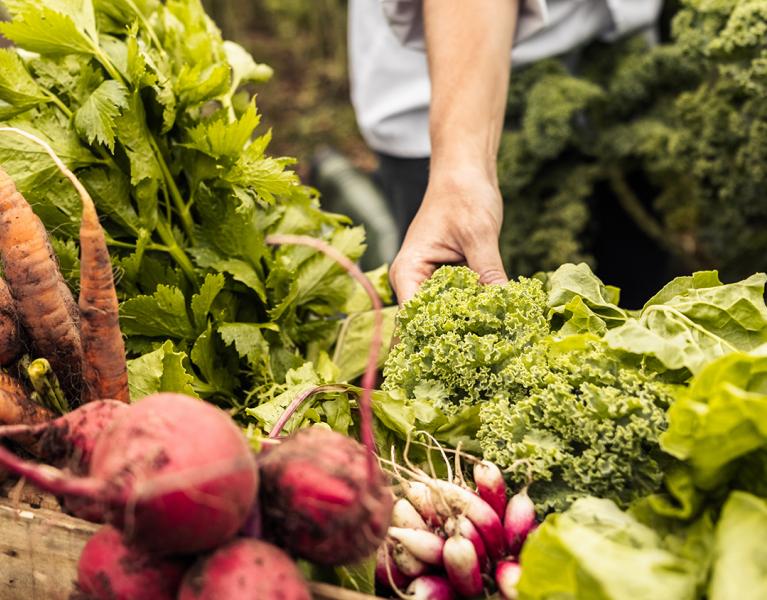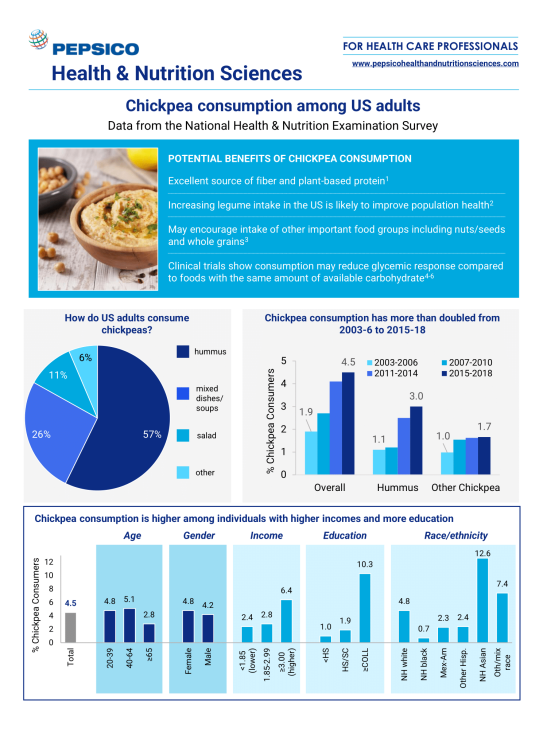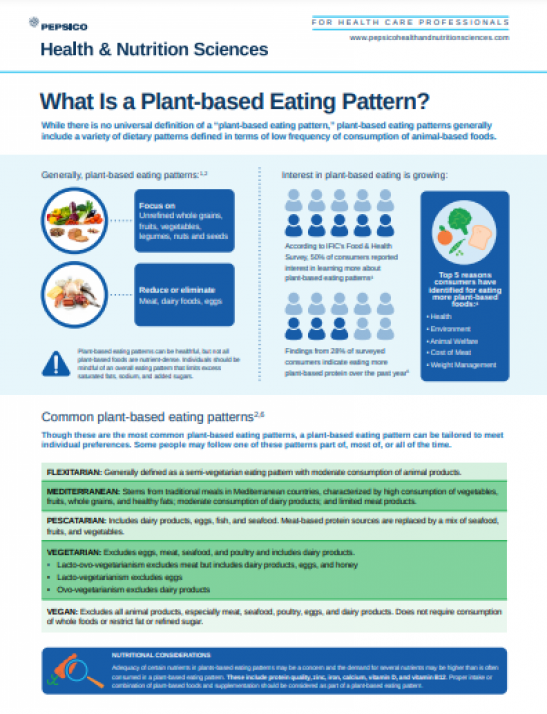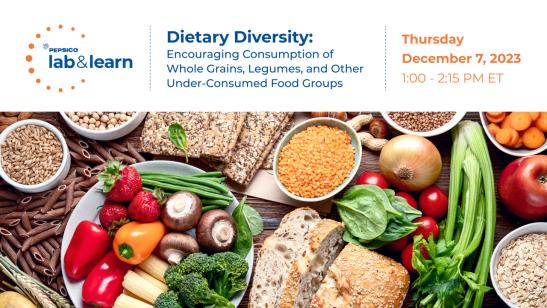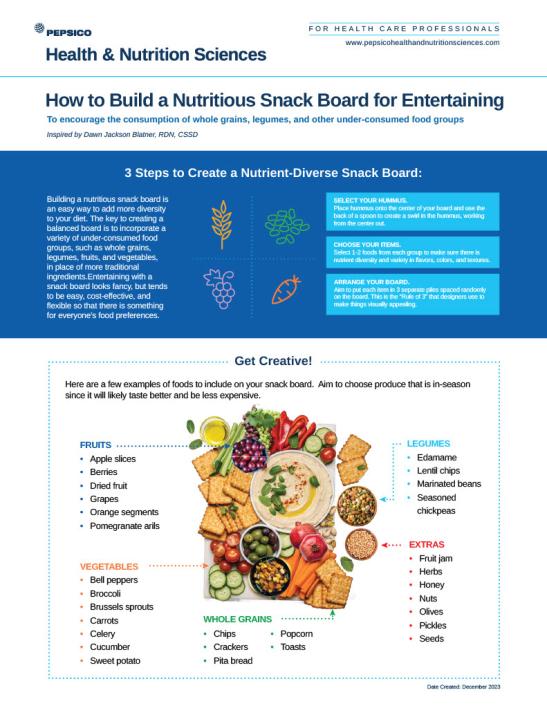Kutepova, I., Rehm, C.D., & Friend, S.J. (2023). UK chickpea consumption doubled from 2008/09–2018/19. Nutrients, 15(22), 4784. doi:10.3390/nu15224784
Abstract:
Background: Only 9% of individuals in the United Kingdom (UK) meet the recommendation for dietary fibre intake. Little is known about chickpea consumption in the UK. Methods: Chickpea intake trends and sociodemographic patterns were analysed using the National Diet and Nutrition Survey Rolling Programme data collected from 2008/09 to 2018/19 among 15,655 individuals ≥1.5 years completing a four-day food diary. Chickpea consumers were identified based on a list of chickpea-containing foods, with the most consumed foods being hummus, boiled chickpeas, chickpea flour, and low/reduced-fat hummus. Micronutrient and food group intakes were compared between chickpea consumers and non-consumers; the Modified Healthy Dietary Score was also assessed, which measures adherence to UK dietary recommendations. Results: Chickpea consumption increased from 6.1% (2008–2012) to 12.3% (2016–2019). Among 1.5–3 years, consumption increased from 5.7% to 13.4%, and among 19–64 years, consumption increased from 7.1% to 14.4%. The percentage of individuals eating chickpeas was higher among individuals with higher incomes and more education. Healthy-weight adults were more likely to consume chickpeas compared to those who were overweight or obese. Compared to both bean and non-bean consumers, chickpea consumers ate significantly more dietary fibre, fruits and vegetables, pulses, nuts, and less red meat and processed meat products. Chickpea consumers also had a higher Modified Healthy Dietary Score. Conclusions: In the UK, chickpea consumption more than doubled from 2008/09 to 2018/19. Chickpea consumers had a higher diet quality than non-consumers.
Rehm, C. D., Goltz, S. R., Katcher, J. A., Guarneiri, L. L., . . . Maki, K. C. (2023) Trends and patterns of chickpea consumption among United States adults: Analyses of National Health and Nutrition Examination Survey Data. The Journal of Nutrition, 153(5), 1567-1576. doi:10.1016/j.tjnut.2023.03.029
Abstract:
Background: Chickpeas are an affordable and nutrient-dense legume, but there is limited United States data on consumption patterns and the relationship between chickpea consumption and dietary intakes.
Objectives: This study examined trends and sociodemographic patterns among chickpea consumers and the relationship between chickpea consumption and dietary intake.
Methods: Adults consuming chickpeas or chickpea-containing foods on 1 or both of the 24-h dietary recalls were categorized as chickpea consumers. Data from NHANES 2003-2018 were used to evaluate trends and sociodemographic patterns in chickpea consumption (n = 35,029). The association between chickpea consumption and dietary intakes was compared to other legume consumers and nonlegume consumers from 2015-2018 (n = 8,342).
Results: The proportion of chickpea consumers increased from 1.9% in 2003-2006 to 4.5% in 2015-2018 (P value for trend < 0.001). This trend was consistent across age group, sex, race/ethnicity, education, and income. In 2015-2018, chickpea consumption was highest among individuals with higher incomes (2.4% among those with incomes <185% of the federal poverty guideline compared with 6.4% with incomes ≥300%), education levels (1.0% for less than high school compared with 10.2% for college graduates), physical activity levels (1.9% for no physical activity compared with 7.7% for ≥430 min of moderate-equivalent physical activity per week), and those with better self-reported health (1.7% fair/poor compared with 6.5% for excellent/very good, P-trend < 0.001 for each). Chickpea consumers had greater intakes of whole grains (1.48 oz/d for chickpea consumers compared with 0.91 for nonlegume consumers) and nuts/seeds (1.47 compared with 0.72 oz/d), less intake of red meat (0.96 compared with 1.55 oz/d), and higher Healthy Eating Index scores (62.1 compared with 51.2) compared with both nonlegume and other legume consumers (P value < 0.05 for each).
Conclusions: Chickpea consumption among United States adults has doubled between 2003 and 2018, yet intake remains low. Chickpea consumers have higher socioeconomic status and better health status, and their overall diets are more consistent with a healthy dietary pattern.
